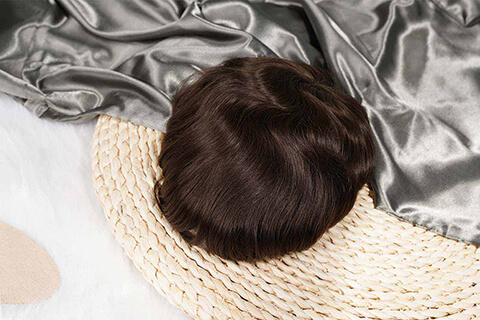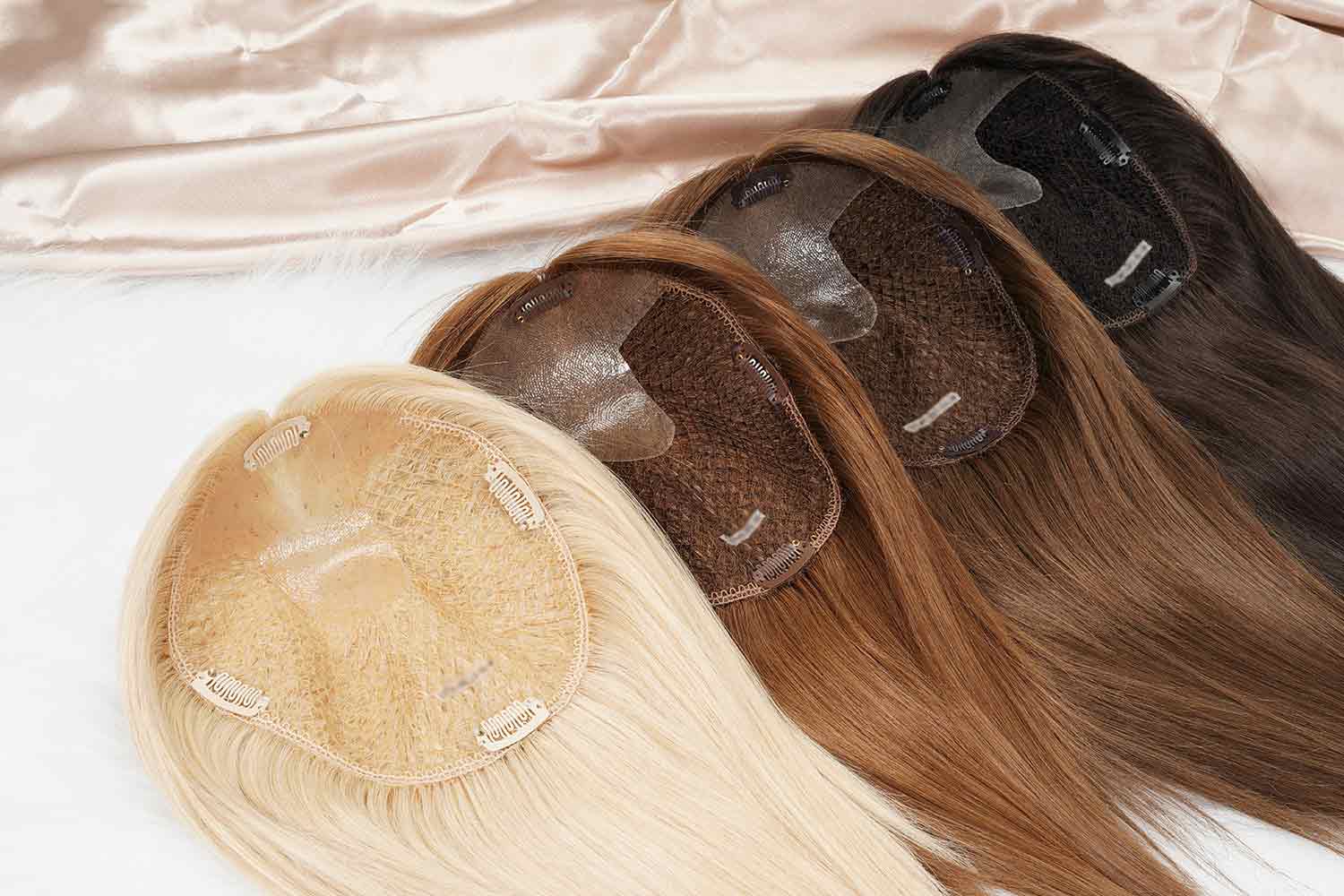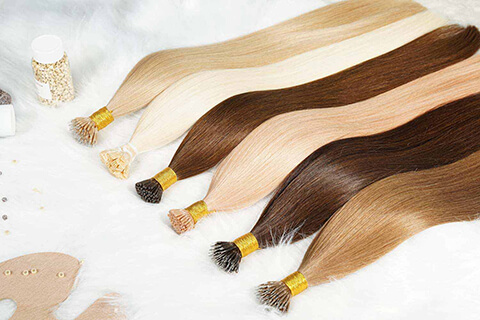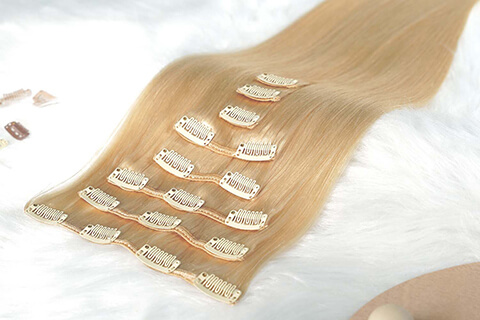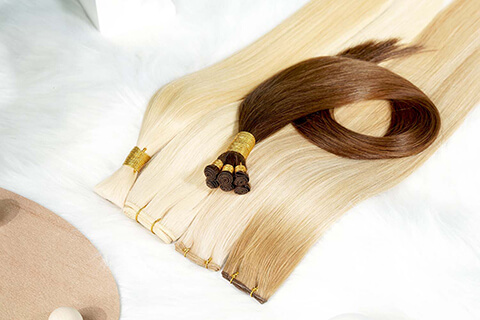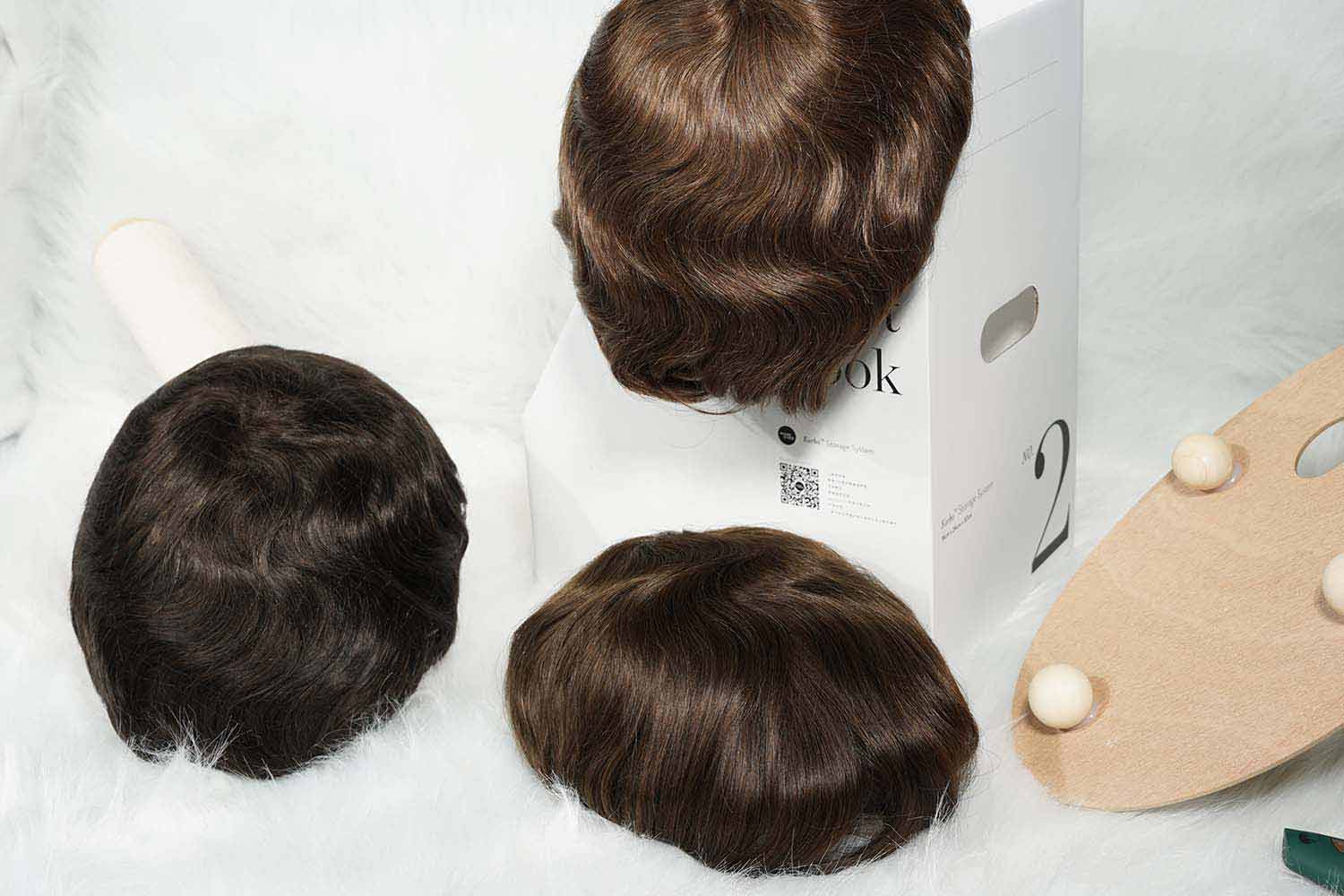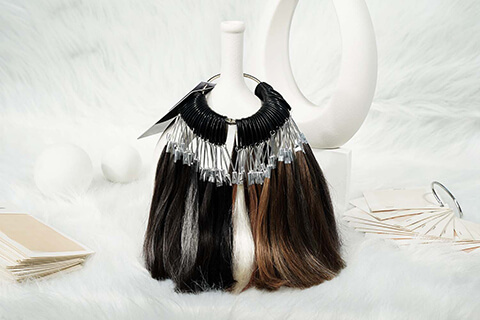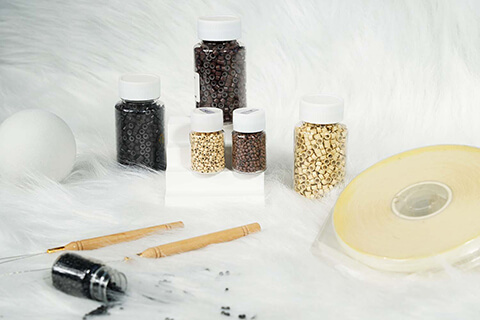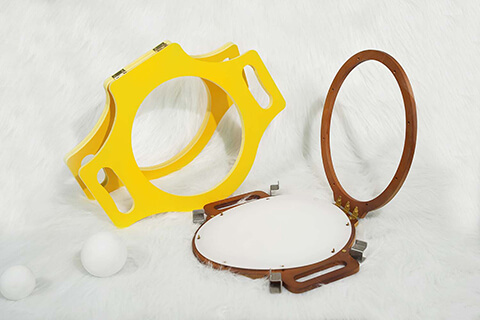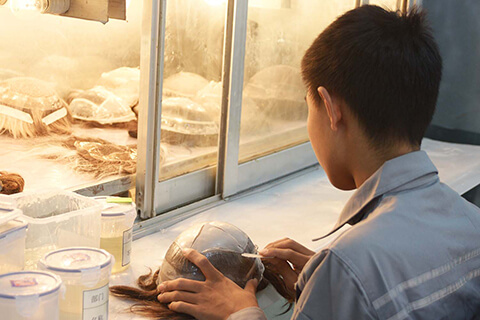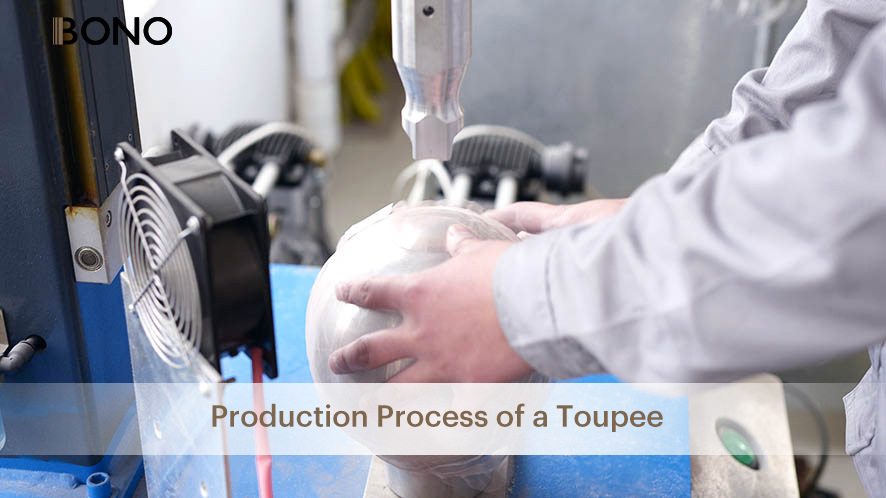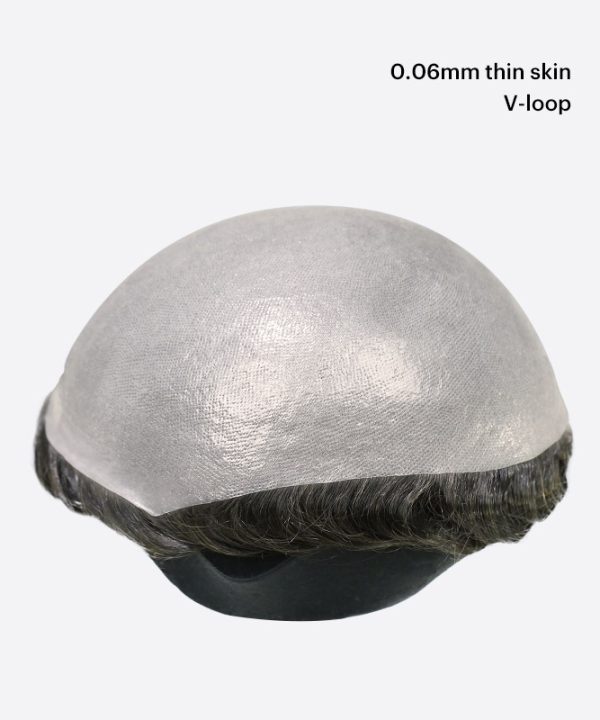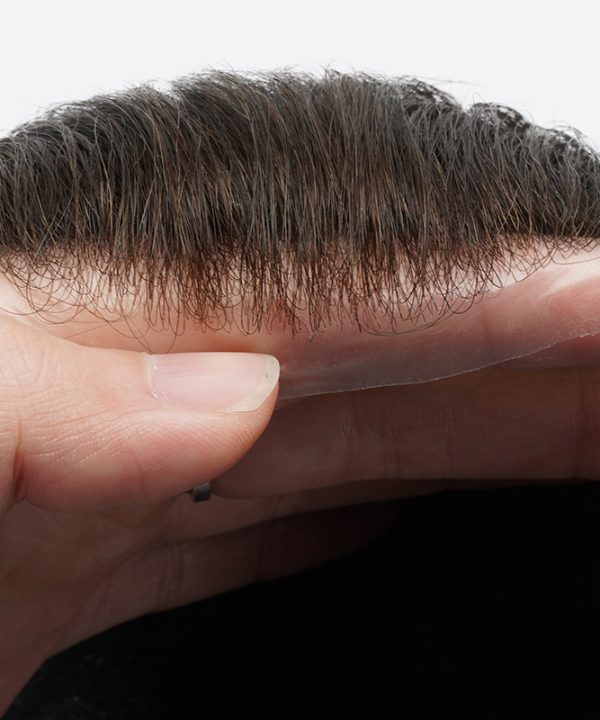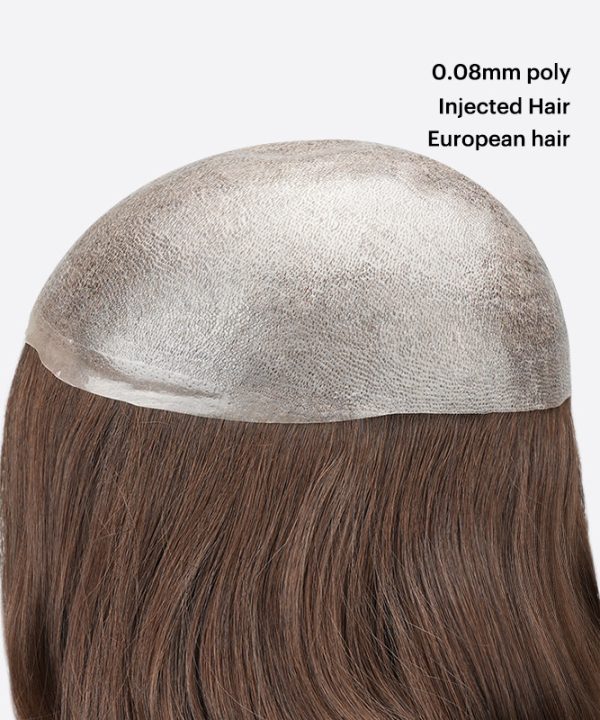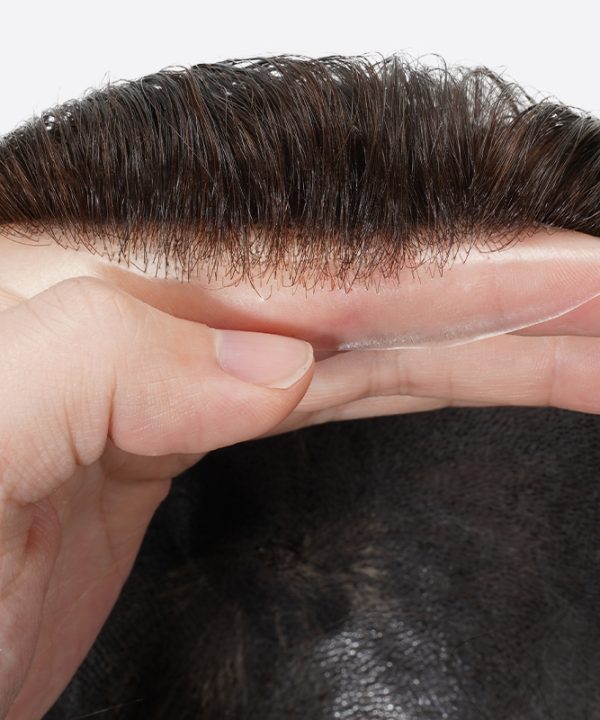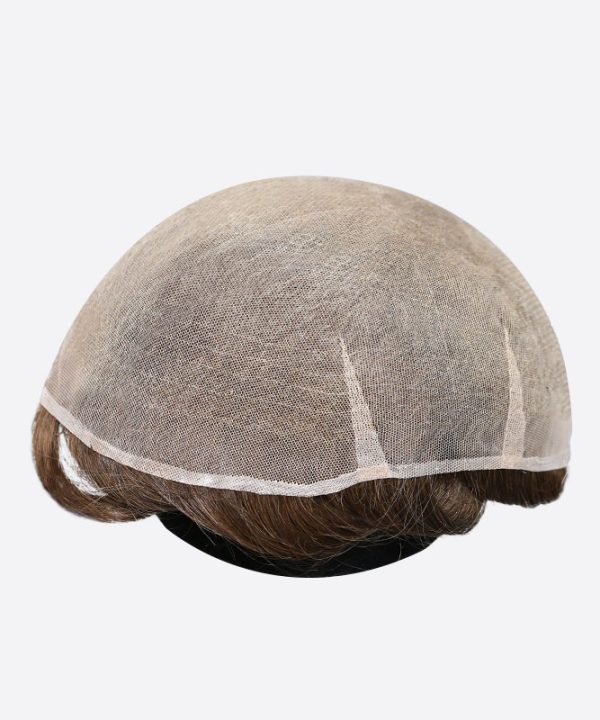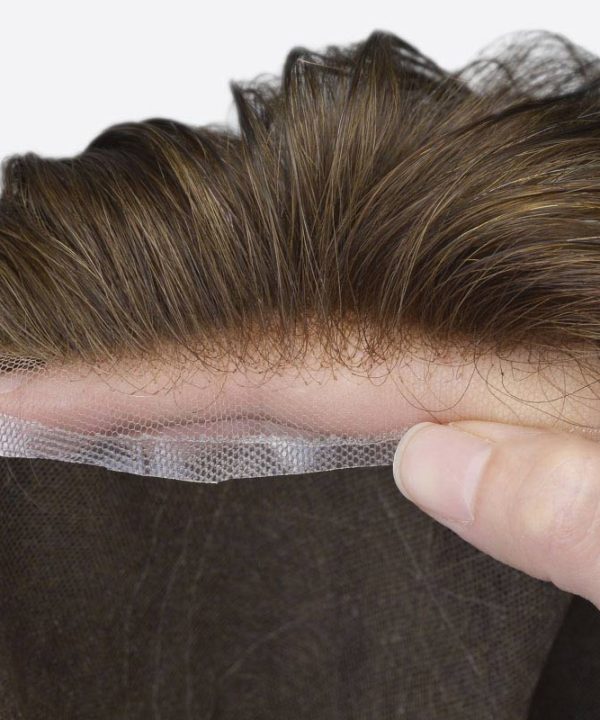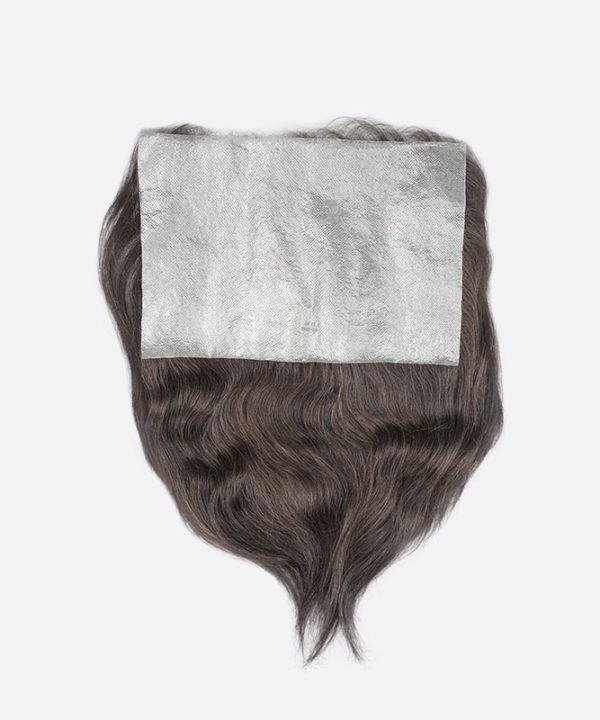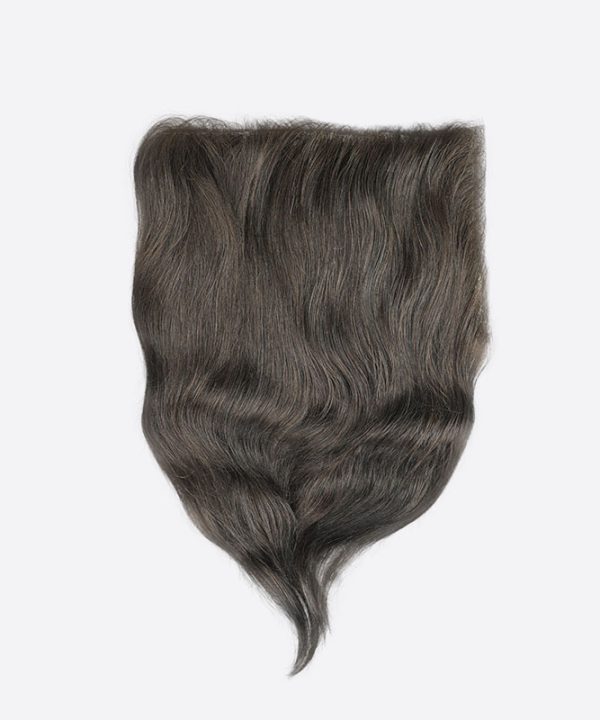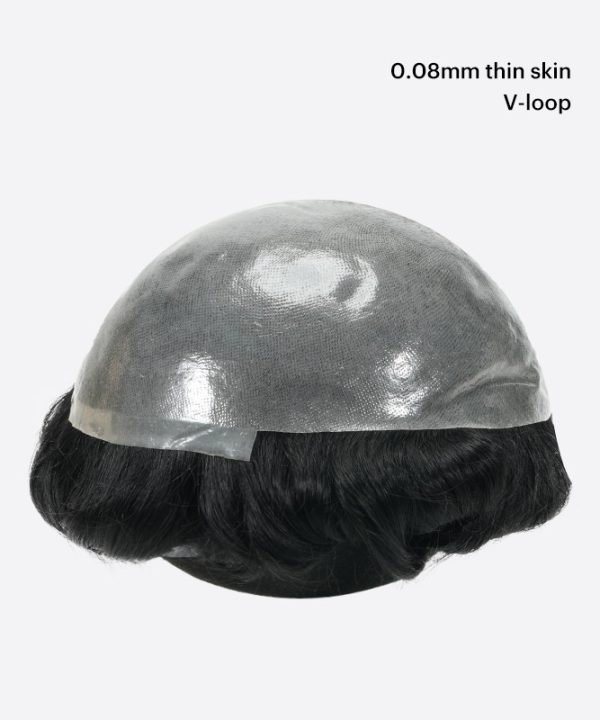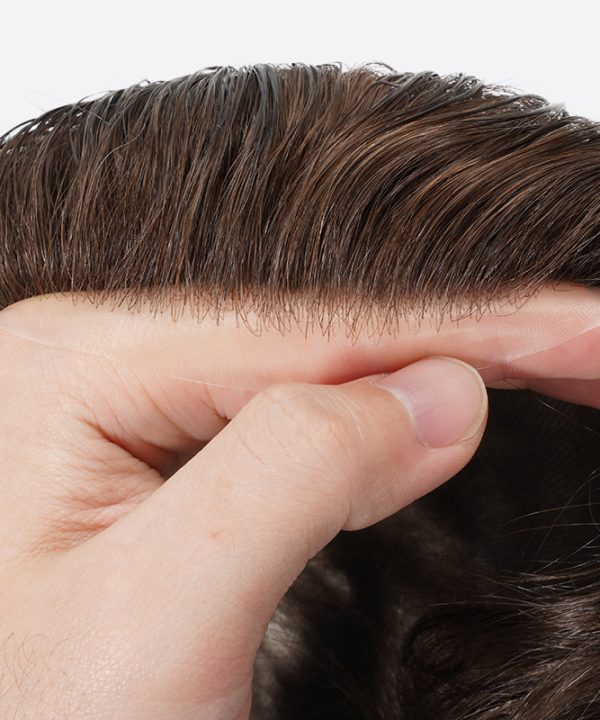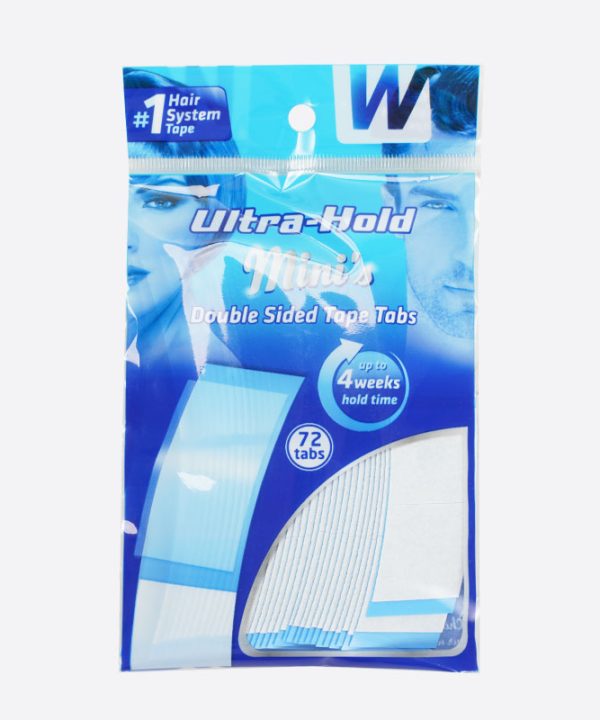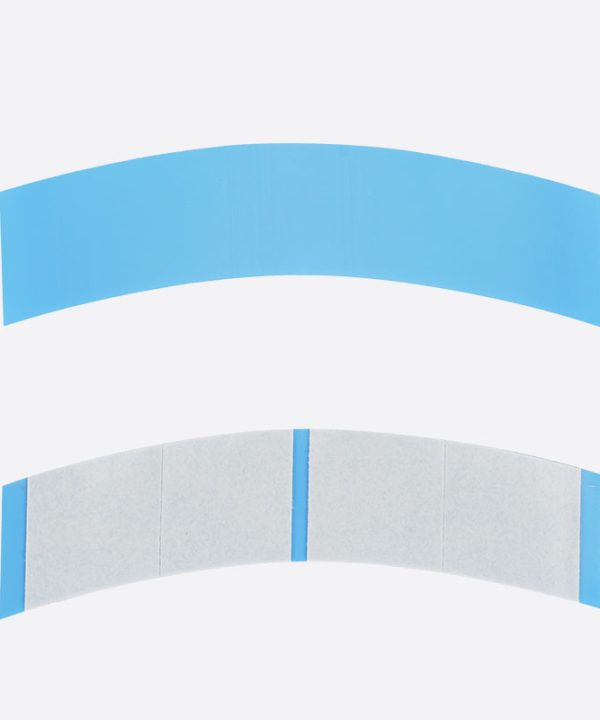No products in the cart.
Designs and Production
Production Process of a Toupee
In the 1960s, the knowledge and technique of manufacturing toupees including the ventilation, coloring, and other processes were transferred from Japan to Qingdao, making this city the biggest and the most important manufacturing base of toupees in China. Over more than 50 years of development, Qingdao is becoming the best toupee supplier in Asia. In this blog post, we will look into the production process step by step.
Introduction
At Bono Hair, we believe that to comprehend the potential of a product, and the benefits of such products, we should learn about its history as well as the current market trends, and last but not least, the methods and processes used by toupee manufacturers to be the best toupee suppliers in the world.
A brief history of the past: Many civilizations dating back to the Egyptians to the modern-day British Parliament use wigs to portray power. However, as times progressed, toupees and wigs have been passed down to everyday people who suffer from hair loss and want to live a more complete life. Many Cultures and ethnic groups use wigs in their everyday life. For example, in Africa, hair loss amongst both men and women is very high and therefore women use wigs, overall women use hair systems for fashion. Typically, men suffer a higher rate of hair loss in comparison.
China’s Leading Manufacturer of Hair Systems
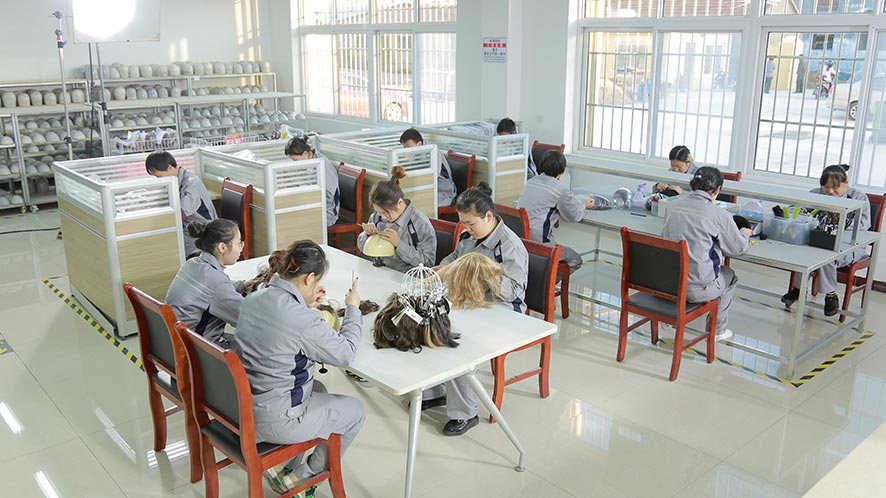
Wigs and Toupees are two different words, Bono Hair specialized in toupee-making for men. These two different words also have two different markets. For the Women’s market, there are many different types of products, such as full wigs, lace closure, frontal, extension, and weft. Most of them are machine-made ventilation, correspondingly, the cost is cheaper. Henan province is the biggest manufacturing base of wigs in China.
Qingdao, Shandong Province in China is becoming the biggest and the most important manufacturing base of toupee in China. Toupee is created for men by hand. Every stage of the production process is not carried out by machine, but by a skilled labor force. In the 1960s, the knowledge and technique of manufacturing toupees including the ventilation, coloring, and other processes were transferred from Japan to Qingdao, making this city the biggest and the most important manufacturing base of toupees in China. Over more than 50 years of development, Qingdao is becoming the best toupee supplier in Asia.
Step-by-Step Production Process
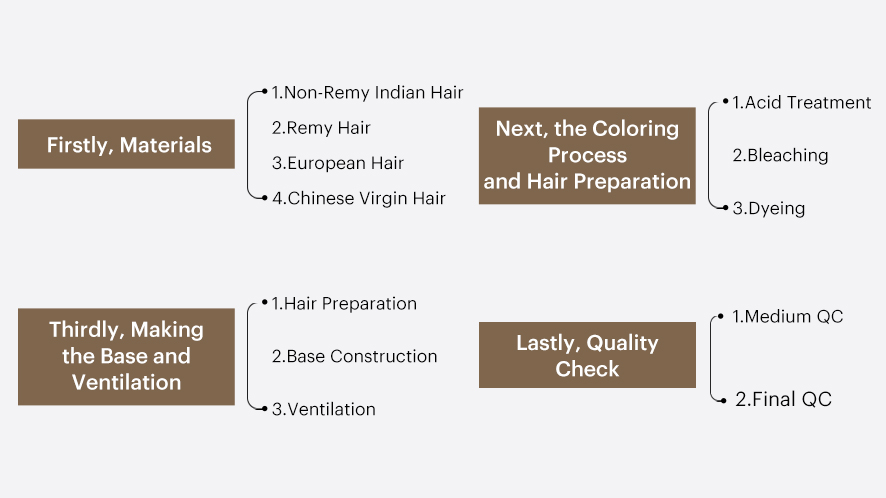
Firstly, Materials
There is a variety of base materials, each with its own strengths and weaknesses. Lace for comfort, Mono being the most durable, Skin is the most invisible. Because we have already covered these in detail, we will now focus on describing different hair types. India is the largest supplier of hair to the world and it has similar characteristics and qualities as European hair. There are two types of this type, Remy and Non-Remy hair.
- Non-Remy Indian Hair is collected from multiple sources, therefore, it’s impossible to guarantee that the cuticle of the hair is running in the same direction. This can cause tangling and quality issues if not processed properly. The process done correctly involves partially removing the cuticle with acid.
- Remy Hair is usually considered the finest quality human hair to make a toupee with. As a toupee maker, Remy hair is usually the most stocked type of hair. Remy hair is collected in a method that ensures that all the cuticles are facing the same direction and completely aligned.
- European Hair, due to its shiny appearance and soft textures, is considered the best quality and most expensive hair type that toupee suppliers offer their clients. Since the hair is usually quite thin, it is not treated heavily with acid or bleached dyed so that it keeps its quality. For lighter color hair, such as blond, it’s not logical to use treated European hair.
- Chinese Virgin Hair has extremely strong characteristics in that it can be acid-treated as well as bleached and dyed. Furthermore, it is in a much higher supply compared to European hair. So for customers looking for lighter hair colors with a longer length, for example, more than 8″, Chinese Virgin Hair is becoming a more sought-after material than European Hair. Usually, the best and thinnest Chinese Virgin Hair would be picked up to use for custom orders.
Next, the Coloring Process and Hair Preparation
Once the hair is chosen, the next stage is the acid treatment followed by the bleaching and dyeing processes. These three main processes are key variables that impact the final quality of the hair.
Looking at the acid treatment process as an example, if the hair is treated with not enough solution, the cuticle remaining on the hair will cause the hair to tangle with each other. If the hair is soaked with too much acid solution, it will damage the hair and cause it to get tangled easily, or sometimes the hair is simply thrown away in extreme cases.
At Bono Hair, we try to guarantee our clients with the assurance that after years of being in the industry, we have successfully mastered this part of the process of making a toupee.
Thirdly, Making the Base and Ventilation
Efficiency is something that Bono Hair takes pride in guaranteeing our clients. An example of this is shown during the production process. While the hair is being processed and prepared our skilled workforce is building the base according to the specifications provided. It is important to give as much time to the following: Hair Prep, Base Construction, and Ventilation. These three are the most important contributors to the final hairpiece that will be connected to our brand. Therefore, we only expect the highest quality toupees to be created.
The Base: Once receiving the specifications and instructions from the head office, the workers will use the chosen base materials. Whether it’s one material for example full Lace. Or possibly a Custom Combination of Lace/Mono and Skin/PU. If it’s a Custom base, then the use of glue to connect the two materials will need to be done. If the glue is not applied properly, the base will be more delicate and easier to break.
Once the materials have been chosen the next step will be to use the mold provided to cut out the right shape for the hairpiece. When using Skin base due to its thinness we brush poly on the mold, to ensure a uniform thickness and no bubbles occur inside that could lead the base to be easily broken. Only our employees with at least 3 years’ experience perform this process.
The Ventilation: There are many different types of Ventilation for toupee. Such as Knotting, Injected and V-looped, etc. Usually, for a custom order, clients would not tell us which detailed knotting method to use on different areas, instead, they would tell us what effect they would like, and we would conduct the Ventilation method that we think meets their needs/requirements.
For example, for the front hairline of a toupee using Lace or Mono, we would use single split knot with bleached knotting to create a more natural look and invisible hairline. Also, gradual increase in hair density and the zigzag knotting method. In order to achieve a natural front hairline, for some special order that wants brushing back, under-hair ventilation will be used to ensure the base edge is undetectable.
Lastly, Quality Check
This part of the production process is the most important and can take a lot of time, there are two stages of the Quality Check: Medium and Final QC.
Each toupee manufactured is thoroughly checked to make sure the specifications are provided, assuring that the quality that comes with our brand Bono Hair is maintained and our clients are satisfied.
How do We Do This from a Custom Order Perspective?
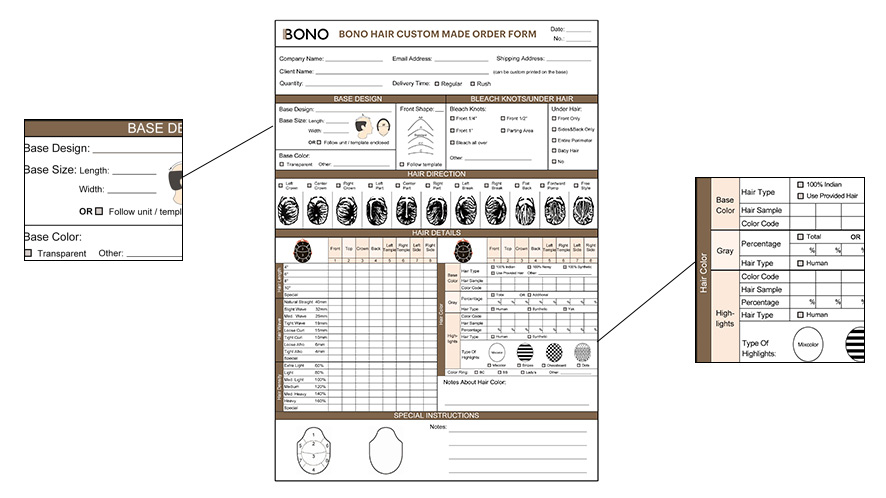
Once receiving a custom order, we will first translate the English Order Form into the process of production form into Chinese.
Medium QC: This involves the checking of Hair Type, Hair Length, Hair Density, the Curl and Color of the hair.
Once the Medium QC has completed the following processes are conducted:
- Knot Sealing – Skin-based hair systems that require brush poly on the bottom of the base to seal the knots. Lace/Mono-based hair systems that require sprayed poly to seal the knots.
- Bleaching Knots – Lace/Mono-based hair systems will have the knots bleached. Skin-based hair systems are unable to have bleaching done to them. Therefore, V-looped or Injected Hair and single knotting ventilation methods are used to ensure the hair system remains looking natural and its knots are properly installed.
- Lastly, there is the washing and styling, which is the final stage of the production process before the Final QC. The hairpieces are thoroughly washed and cleaned to ensure there are no chemical substances left on a toupee.
- It is then dried and sent to the styling station where our professional stylist will work on it.
Conclusion
There you have it! This is Bono Hair’s production process by the very best toupee factory in China. We hope you found this Blog post informative and insightful. If you have any questions, our Customer Service team are ready waiting for your call!
Bono Hair, we are the Manufacturer and Direct Supplier of the best Toupees.









